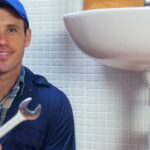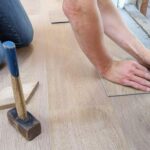Tradie business : The concept isn’t just relevant to the corporate world. Tradesman business coach Jon Dale wants to ‘normalise’ your profits and losses to help you find out how your company is actually tracking. He discusses the process of crunching the numbers on his website, Smallfish.com.au, forecasting recurring monthly revenue and expenses to help calculate your real profit.
When it comes to a successful business, revenue can seem irrelevant without calculating your expenses. It’s all well and good to have money coming in, but if your losses far outweigh your sales, chances are you’ll find yourself in the red.
“Basically, we look at the income - (invoiced) revenue is what we see, assuming you do your accounting on an accrual basis,” says Dale.
“Whether your customer has paid that invoice yet or not, is not what we’re looking at yet. So we’re not looking at your cash position. We then think about how normal that income is.”
Once you’ve been trading for several months, you can get a good idea of how ‘normal’ your revenue is – putting inflated invoices aside, how regular and consistent are the payments?
“That’s what I mean by normalising – you can’t just take the numbers at face value, you have to think a bit,” Dale continues.
“Recently, I’ve been making sure to make allowances for the JobKeeper and cash flow boost payments. If we look at revenue and gross profit and net profit and some payments have been received, they inflate the profitability artificially, don’t they?
“It’s a true reflection of the profitability of the business because the money really came in, didn’t it? But it doesn’t help us understand if things are going okay, so (in our heads, at least), we track it out.”
When you ‘normalise’, you see past the one-off payments that affect your balance sheet. Using an example of one of his clients, Dale explains that “every month we look at revenue and consider whether the revenue is coming in at the same rate the costs are going out.”
‘Normalising’ profit and loss is part of Dale’s wider idea that all successful businesses need systems in place.
He suggests that when the company isn’t performing well, having a plan in place can help identify the root cause and help you identify and fix the problem.
“The first step is being clear that there’s a problem, isn’t it? And the P&L (normalised) is where we’ll see if we don’t have the systems in place (yet) to measure other things,” Dale adds.
“It’s a great check to do. If things are shifting (hopefully, in the right direction), something we’re doing is having an effect and if things have shifted in the wrong direction we’re aware of it soon, and we can identify and fix the problem.”
Looking to start your own business? Head to Qualify Me! to see how a tradesman coach like Dale can give you the keys to success.
The information in this article is general in nature. Your situation may vary so if you are seeking financial advice please speak to a professional.













